The Ambaville dermocosmetic product-line
AMBAVILLE organic extracts (Hubertia ambavilla)
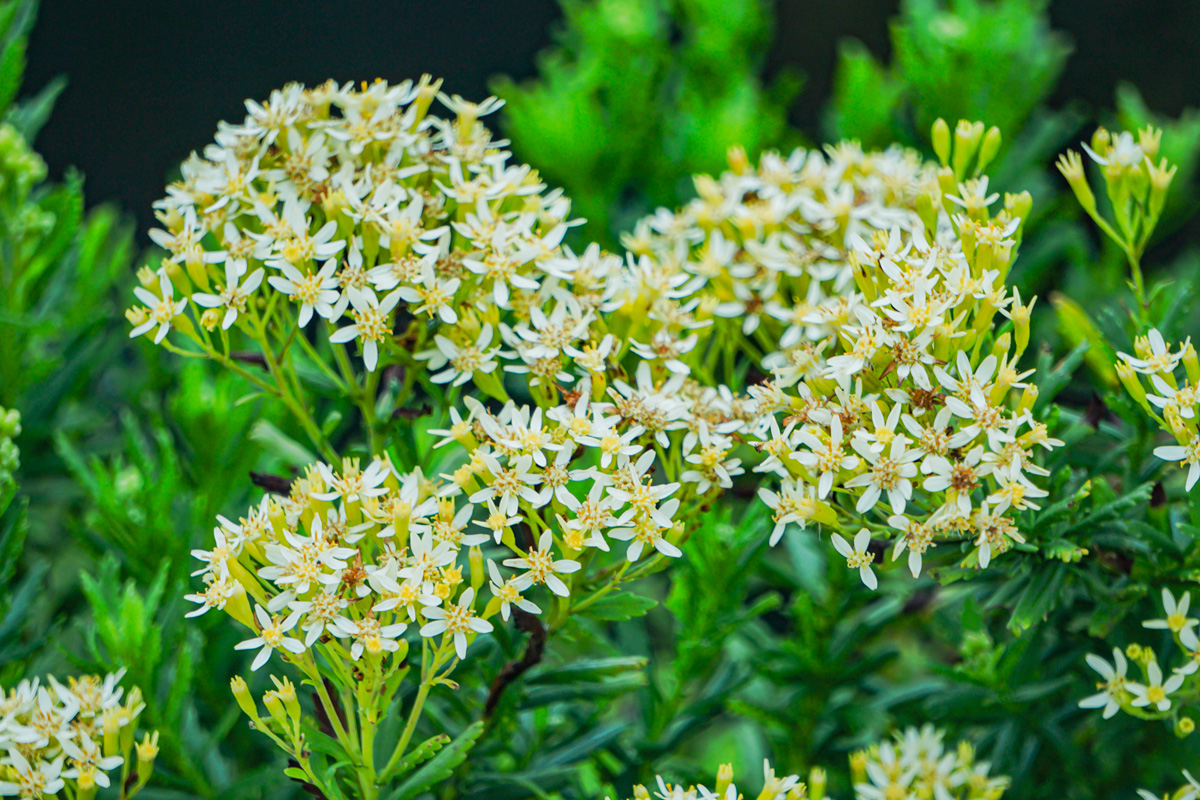
The plant
Ambaville, scientifically termed (Hubertia ambavilla), is a densely branched shrub 1-4 m tall. The stems are glabrous and very leafy. The outer radiate flowers are pale yellow to whitish, 3.5 mm thick. The fruit is an achene of 1.8 - 3 mm. Endemic to Reunion Island, Ambaville has been introduced to Mauritius. In Reunion, it is a common plant from 1000 to 2000 m altitude. It is mainly found in heliophilic forests. It can also be found lower down, up to an altitude of 300 m .
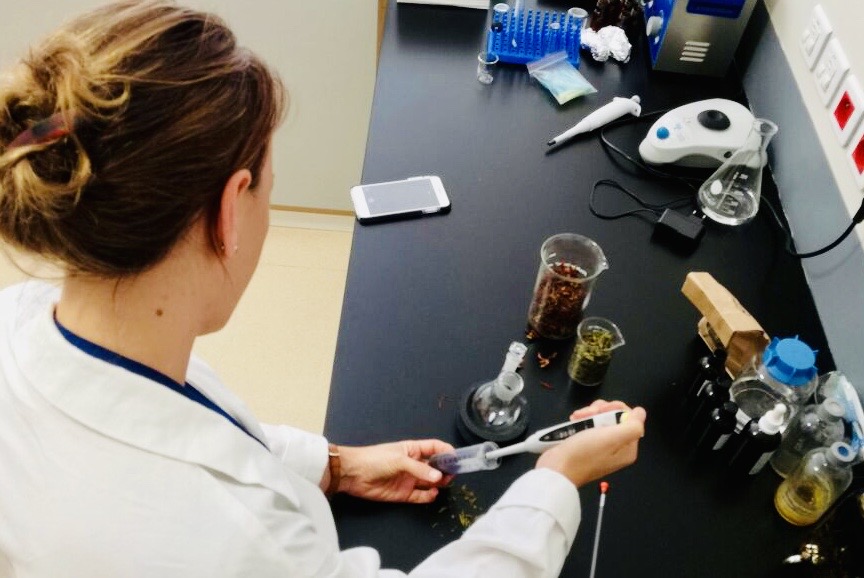
The benefits of Ambaville extracts
Ambaville is listed in the French pharmacopoeia. It is traditionally used as a bath or as a decoction to treat bourbou, diaper rash in infants, wounds, inflammation, intertrigo, herpes and even scabies. It is used as a “refreshing” and purifying agent: eczemas and other skin diseases..
Ambaville leaves and stems contain phenolic compounds such as flavonoids and catechetical tannins which are responsible for the antioxidant effects attributed to the plant and its extracts.
The stems of the plant also contain terpene derivatives, 62 compounds have been identified , these compounds have been shown to have anti-inflammatory and soothing effects on the skin.
Borage Oil (Borago officinalis L.)
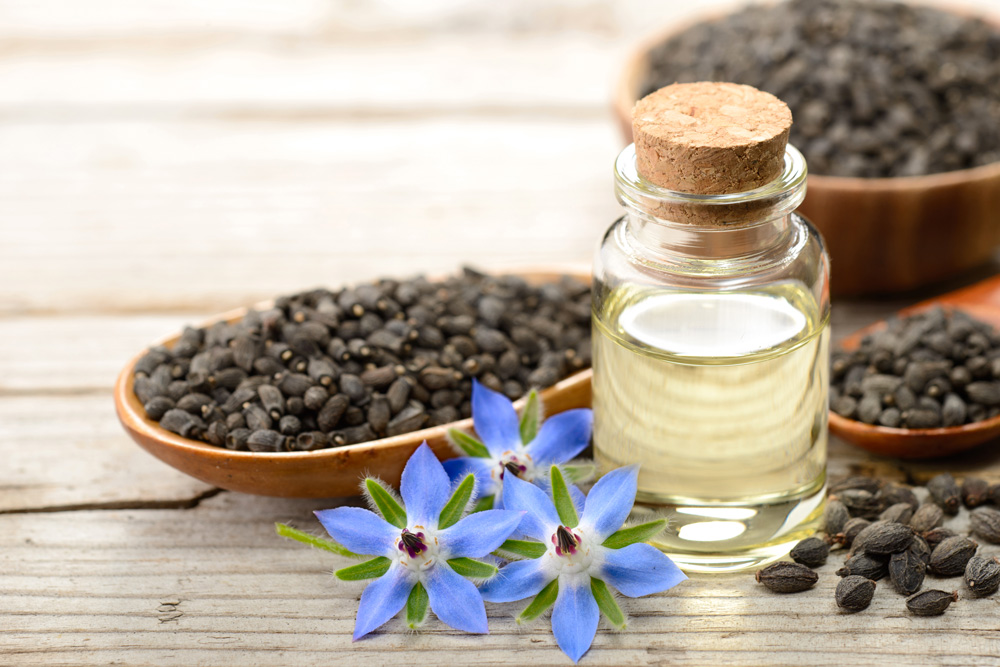
Borage oil is obtained from the borage plant (Borago officinalis L..). This oil has several benefits and uses in herbal medicine. This oil helps the body to repair skin tissue and regenerate the skin. In addition, borage vegetable oil restores elasticity, suppleness, vitality and tone to the skin. These properties are due to its chemical composition where we find monounsaturated fatty acids (oleic acid (Omega 9), 18 to 19%), polyunsaturated (35 to 40% linoleic and 18 to 30% gamma-linolenic acid (Omega 6), 0.2% alpha linolenic (omega 3)) and fatty acids which are present around 12 to 22%. The main fatty acids are palmitic and stearic acids .
Sunflower Oil (Helianthus annuus)
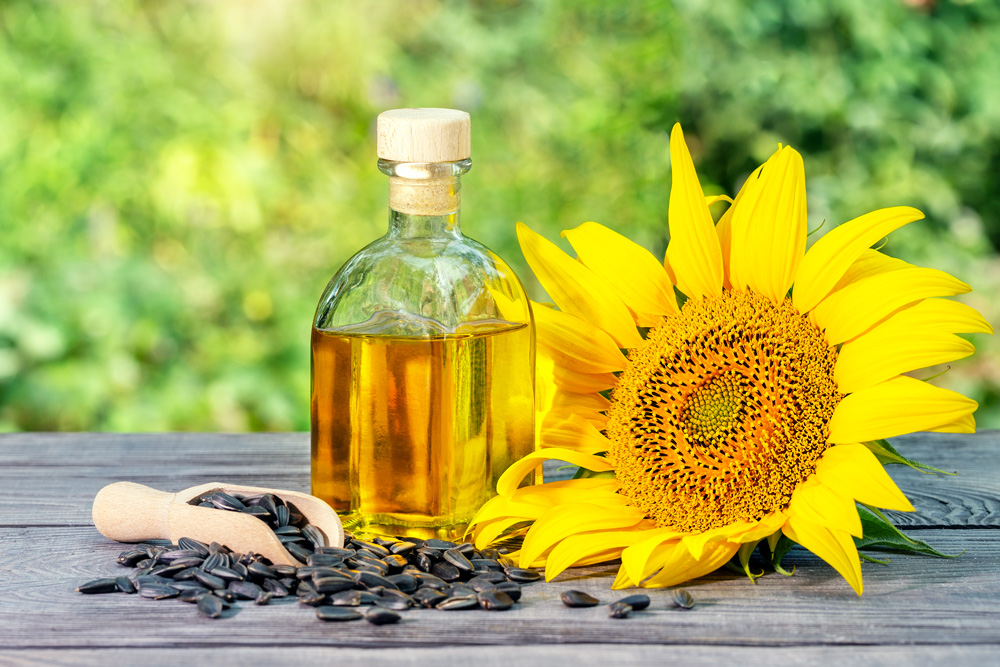
Sunflower oil is obtained from the seeds of the sunflower (Helianthus annuus). There are two varieties of sunflower oil, the “classic” oil (linolenic (omega-6, 65%) and oleic (omega-9, 19%) , and the so-called “oleic” oil, rich in omega 9. These essential fatty acids are essential for the proper functioning of the body that it is not able to synthesize. Its high content of omega 6, helps to boost the immune system but also prevent aging while being an endocrine and nervous regulator. In addition, it has softening and nourishing properties, so it is perfect for dry, even very dry skin, and also prevents dehydration of the skin.
Jojoba Oil (Simmondsia chinensis)
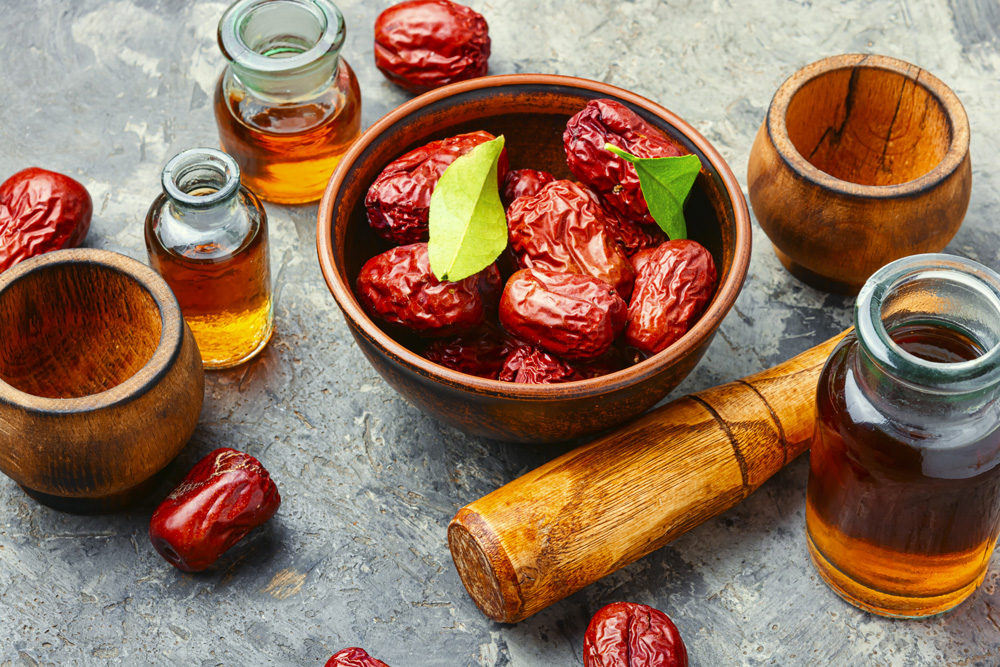
Jojoba oil is obtained from the seeds of jojoba (Simmondsia chinensis). It is made up of 11-eicosenoic acid (66%), Erucic acid (14%) and oleic acid (10%) . This oil has exceptional moisturizing properties . This wax from the seeds of the jojoba tree has nourishing, beautifying, moisturizing and softening properties. It rebalances the hydration of the driest skin and protects it from UV rays. Thanks to it, asphyxiated skin (makeup, pollution) are revitalized and fatty skin is rebalanced.
Argan Oil (Argania spinosa L.)
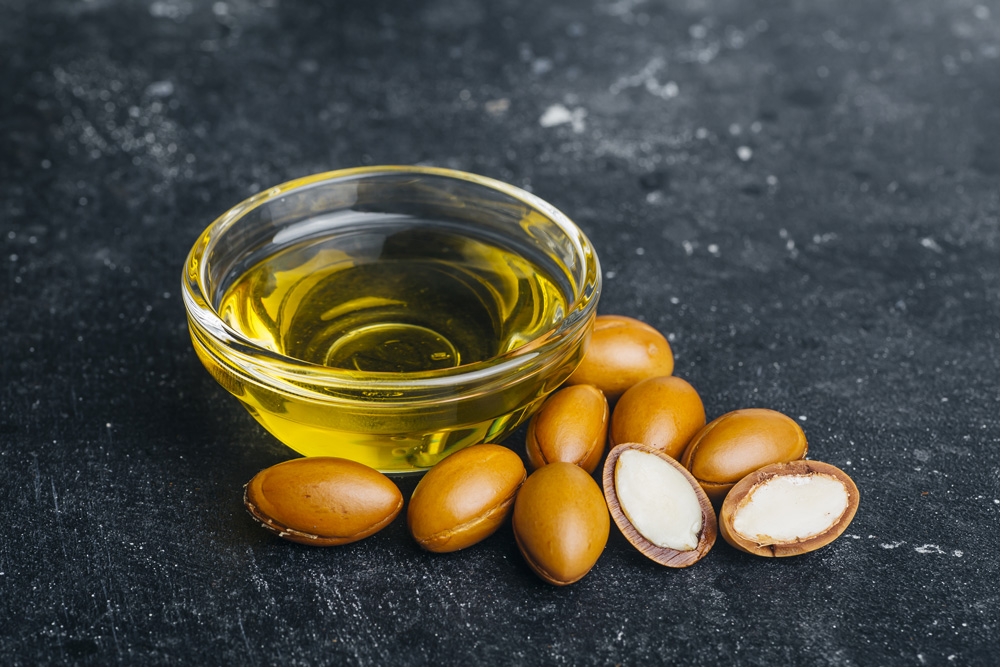
Argan oil is a vegetable oil obtained from the argan tree (Argania spinosa L.), .), a tree endemic to Morocco. Argan oil contains 43% oleic acid (omega-9), 36% linoleic acid (omega-6) and the rest in a monoglyceric forms . It also contains tocopherols (vitamin E), squalene, sterols and polyphenols. Its interesting properties allow it to be used in the cosmetic field, this oil prevents skin dryness and deeply nourishes the skin. Argan oil is suitable for all skin types and is especially suitable for dry and sensitive skin.
Prickly Pear Oil (Opuntia ficus indica)
This vegetable oil is obtained by cold pressing of the seeds ofOpuntia ficus indica, the scientific name of the prickly pear. It usually grows in areas with an arid and semi-arid climate.
Composition
Fatty acids
Other
Several minerals: potassium, phosphorus, sodium, iron and magnesium
The virtues of prickly pear oil in dermocosmetics
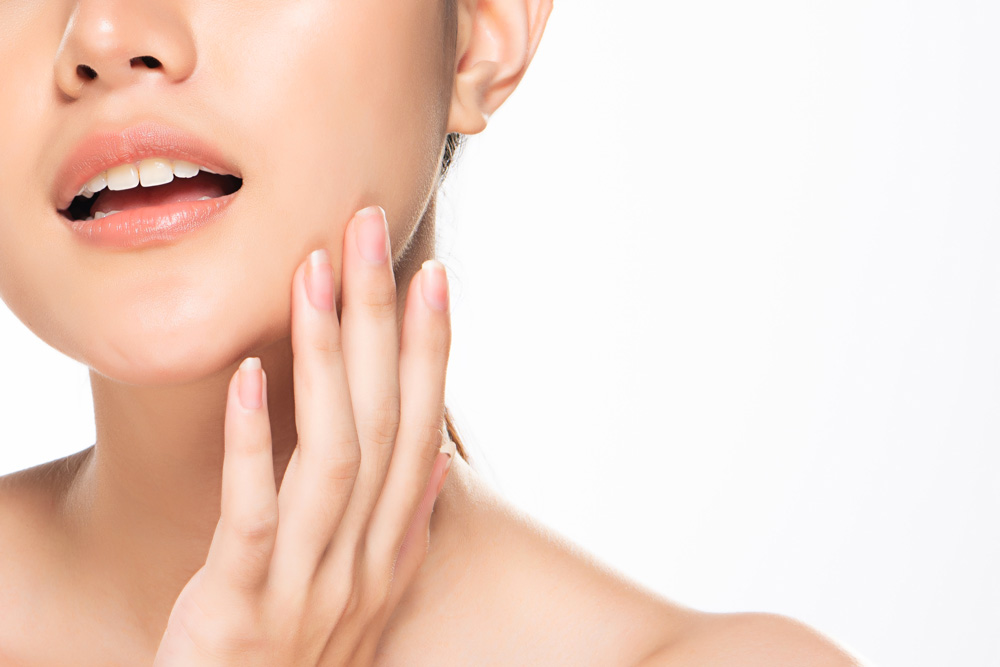
Anti-aging effect
This oil is rich in minerals and amino acids which stimulate the production of collagen, thus accelerating the cell renewal
The phytosterols present in the oil stimulate the production of collagen in the deep layers of the epidermis .
The exceptional content of linoleic acid (60%) also called omega-6 has an anti-inflammatory effect and stimulates the keratinization of the epidermis and increases its elasticity, which significantly reduces wrinkles .
The high content of vitamin E (100mg / 100g) and the presence of several polyphenols give this oil a powerful antioxidant effect (10 times more than vitamin C) which slows down the aging of skin cells and stimulates their renewal .
The different types of phenols present in this oil have an anti-inflammatory and antioxidant effect which helps to protect the skin against pathogens attacks and therefore helps maintain its firmness .
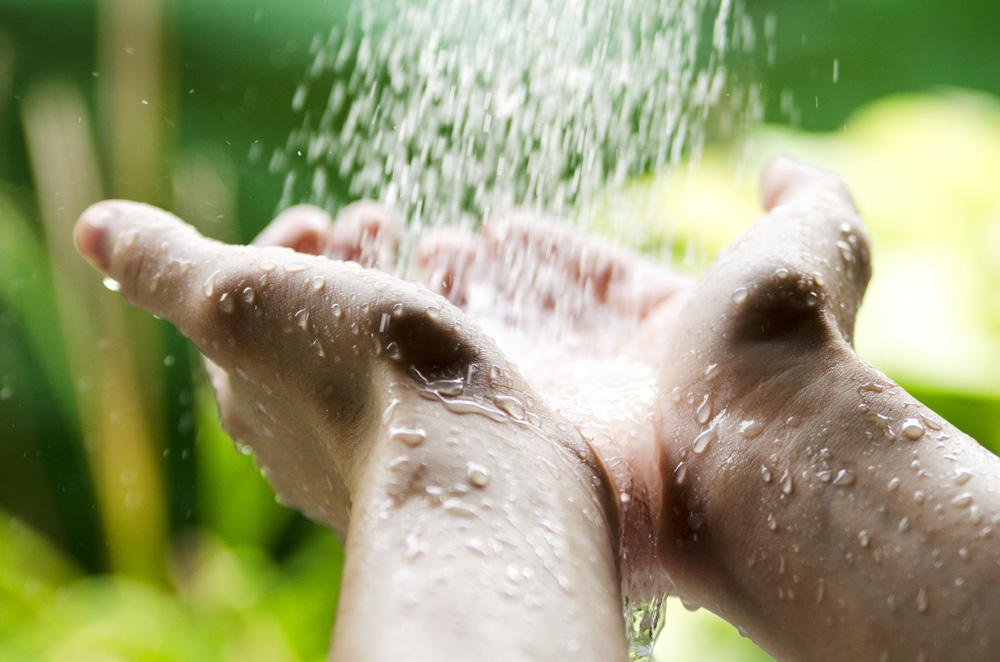
Hydrating effect
The richness of this oil in Linoleic acid gives it rapid absorption by the skin and penetration into the upper layers of the epidermis which makes the skin smooth and silky, without the feeling of oiled skin.
The hydration effect due to the presence of unsaturated fatty acids also gives the skin a great power ofelasticity which significantly reduces stretch marks or prevents their appearance as in pregnant women .
Prickly pear seed oil is among the few crude oils that can be applied to the contours of the eyes. Thanks to the presence of vitamin K, it helps to erase dark circles and reduce bags under eyes by increasing the elasticity of the skin .
Other benefits
Thanks to the anti-inflammatory power of the phenols and polyphenols present in this oil and also to the moisturizing power, this oil helps eliminate acne and acne marks . It also helps to remove scars and to eliminate brown spots.
Thanks to vitamin E and polyphenols, this oil protects the skin against the harmful effects of free radicals and against the effects of pollution .
Its great moisturizing power is also valid for its use on dry and brittle hair. Thanks to the strong presence of linoleic and oleic acid, it provides hydration to the ends and helps strengthen the hair . It also helps strengthen the nails and make them less brittle thanks to the supply of amino acids.
Among the phytosterols present in this oil, we can note the abundant presence of β-sitosterol which has several health benefits but above all a very interesting hair loss prevention power .
Références Bibliographiques
[1] MOREL, A.-L. (2017). PARTICULES D’OR ET PROCEDE ECOLOGIQUE DE PREPARATION. TORSKAL. FRANCE. PATENT WO 2017/125695 A1.
[2] Ben Haddada, M., E. Gerometta, et al. (2020). “Assessment of antioxidant and dermoprotective activities of gold particles as safe cosmetic ingredient.” Colloids and Surfaces B: Biointerfaces 189: 110855
[3] BRILLANT Stéphanie, P. J.-C., MARODON Claude (2006). “PRÉSENTATION DE DEUX PLANTES AROMATIQUES ET MÉDICINALES DE LA RÉUNION À FORT POTENTIEL DE DÉVELOPPEMENT : AMBAVILLE ET FLEUR JAUNE.” Ethnopharmacologia 27: 59-66.
[4] LAVERGNE R., VERA R. (1989) Etude ethnobotanique des plantes utilisées dans la pharmacopée traditionnelle à La Réunion, Agence de Coopération Scientifique et Technique, Paris, p. 135.
[5] FORGACS P. (1981) Etudes phytochimiques et activités biologiques des plantes endémiques de l’Ile de La Réunion et de l’Ile Maurice, Plantes médicinales et phytothérapie, XV:2, 80-91.
[6] FORTIN H., VIGOR C., LOHEZIC-LE DEVEHAT F., ROBIN V., LE BOSSE B., BOUSTIE J., AMOROS M. (2002) In vitro activity of thirty six plants from La Réunion Island, Fitoterapia, 73, 346-350.
[7] Bruneton, J., Pharmacognosie – Phytochimie, plantes médicinales, 4e éd., revue et augmentée, Paris, Tec & Doc – Éditions médicales internationales, 2009, 1288 p. (ISBN 978-2-7430-1188-8)
[8] Khallouki F, Younos C, Soulimani R, Oster T, Charrouf Z, Spiegelhalder B, Bartsch H, Owen RW (2003) Consumption of argan oil (Morocco) with its unique profile of fatty acids, tocopherols, squalene, sterols and phenolic compound should confer valuable cancer chemopreventive effects. European journal of cancer prevention. 12(1):67-75. PMID 12548113.
[9] Maria A. Perillo, Damian M. Maestri, Surface behavior of jojoba oil alone or in mixtures with soybean oil, Colloids and Surfaces A: Physicochem. Eng. Aspects 256 (2005) 199–205.
[10] A. R. Place, Comparative aspects of lipid digestion and absorption : physiological correlates of wax ester digestion, AJP – Regulatory, Integrative and Comparative Physiology, 263, 3, p. 464–R471, 1992.
[11] Masaki, H. (2017). Chapter 17 – Bioactive Ingredients: Benefits of Cosmetics Stimulated Through Biological Aspects. Cosmetic Science and Technology. K. Sakamoto, R. Y. Lochhead, H. I. Maibach and Y. Yamashita. Amsterdam, Elsevier: 255-265.
[12] Yahia, E. M., P. García-Solís, et al. (2019). Chapter 2 – Contribution of Fruits and Vegetables to Human Nutrition and Health. Postharvest Physiology and Biochemistry of Fruits and Vegetables. E. M. Yahia, Woodhead Publishing: 19-45.
[13] Visscher, M. O., R. Adam, et al. (2015). “Newborn infant skin: Physiology, development, and care.” Clinics in Dermatology 33(3): 271-280.
[14] Ziboh, V. A. and R. S. Chapkin (1988). “Metabolism and function of skin lipids.” Progress in Lipid Research 27(2): 81-105
[15] Muller L, Theile K, Bohm V. (2010). In vitro antioxidant activity of tocopherols and tocotrienols and comparison of vitamin E concentration and lipophilic antioxidant capacity in human plasma. Mol Nutr Food Res 54(5):731–742.
[16] Chougui, N., Tamendjari A., Hamidj W., Hallal S., Barras A., Richard T., Larbat R., (2013). Oil composition and characterisation of phenolic compound of Opuntia ficus-indica seeds. Food Chem., 139, 796–803.
[17] Khoo, H. E., Azlan, A., Ismail, A., & Abas, F. (2012). Antioxidative properties of defatted dabai pulp and peel prepared by solid phase extraction. Molecules, 17, 9754–9773.
[18] Elias, P.M., Brown, B.E and Ziboh, V. A., (1980). The permeability barrier in essential fatty acid deficiency : Evidence for a direct role for linoleic acid in barrier function. V74:230-233
[19] De Spirt, S., Stahl, W., Tronnier, H., et al. (2009). Intervention with flaxseed and borage oil supplements modulates skin condition in women. Br J Nutr.101:440-445
[20] Muggli, R. (2005). Systemic evening primrose oil improves the biophysical skin parameters of healthy adults. Int J Cosmet Sci. 27:243-249
[21] Coutu, DL., Wu, JH., Monette, A., Rivard, GE., Blostein, MD., Galipeau, J. Periostin. (2008). A member of a novel family of vitamin K-dependent proteins, is expressed by mesenchymal stromal cells. J Biol Chem. 283(26):17991-18001
[22] Gavazzoni Dias, M. F. (2015). “Hair cosmetics: An overview.” International Journal of Trichology 7(1): 2-15.
[23] El Kharrassi, Y., Samadi, M., Lopez. J., El Kebbaj, R., Andreoletti, P., Hammam, I., El Hajj., Vamecq, J., Moustaid, K., Latruffe, N., Saïd El Kebbaj. M, Masson, D., Lizard, G., Nasser, B and Cherkaoui-Malki, M., (2014). Biological activities of Schottenol and Spinasterol, two natural phytosterols present in argan oil and in cactus pear seed oil. Biochimical and Biophysical Research Communication. 446 (3) 798–804.
[24] Sun Young, L., C. Eun-Jin, et al. (2015). “Effects of 1-tetradecanol and β-sitosterol Isolated from Dendropanax morbifera Lev. on Skin Whitening, Moisturizing and Preventing Hair Loss.” Journal of the Society of Cosmetic Scientists of Korea 41(1): 73-83.

